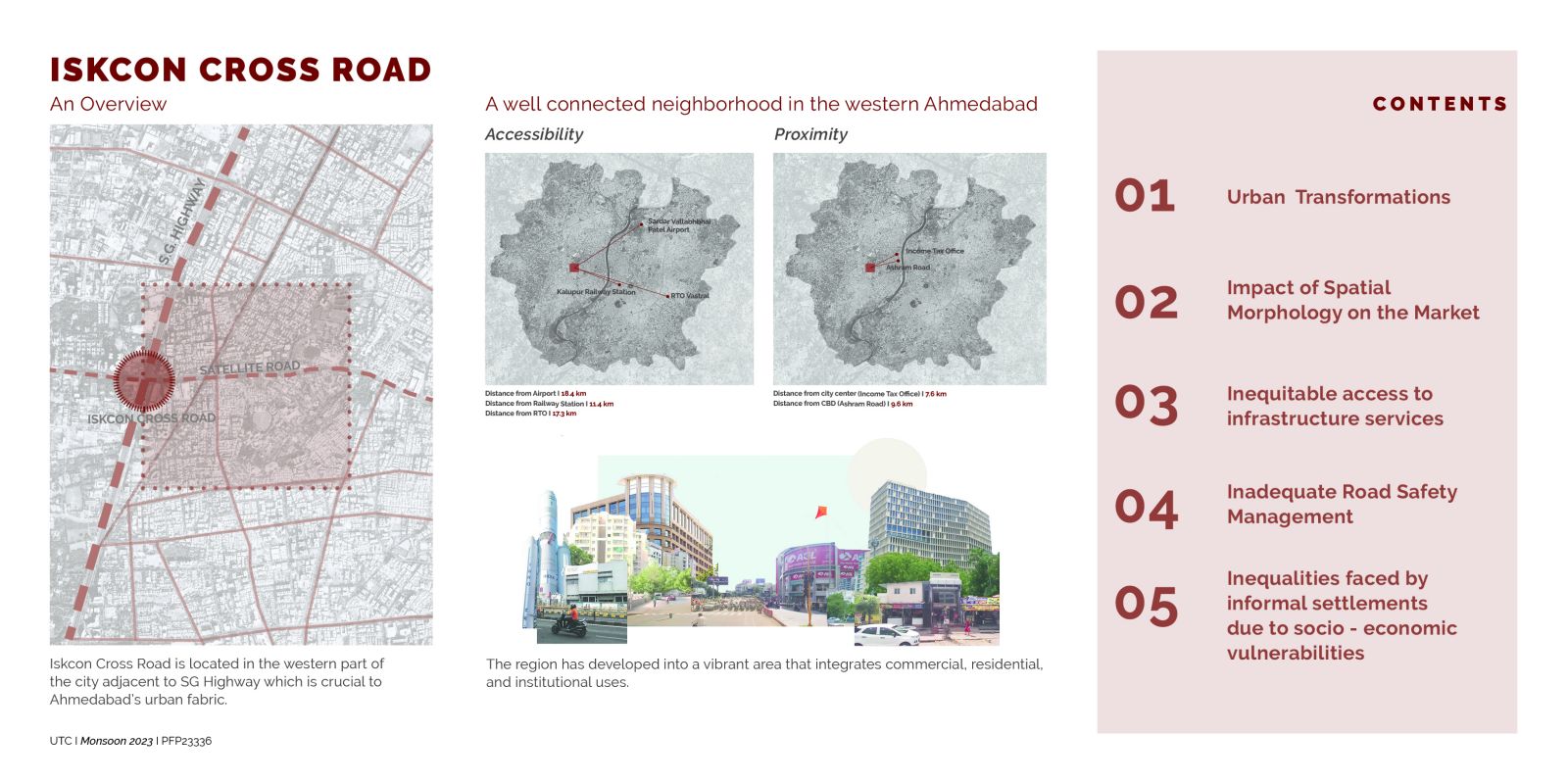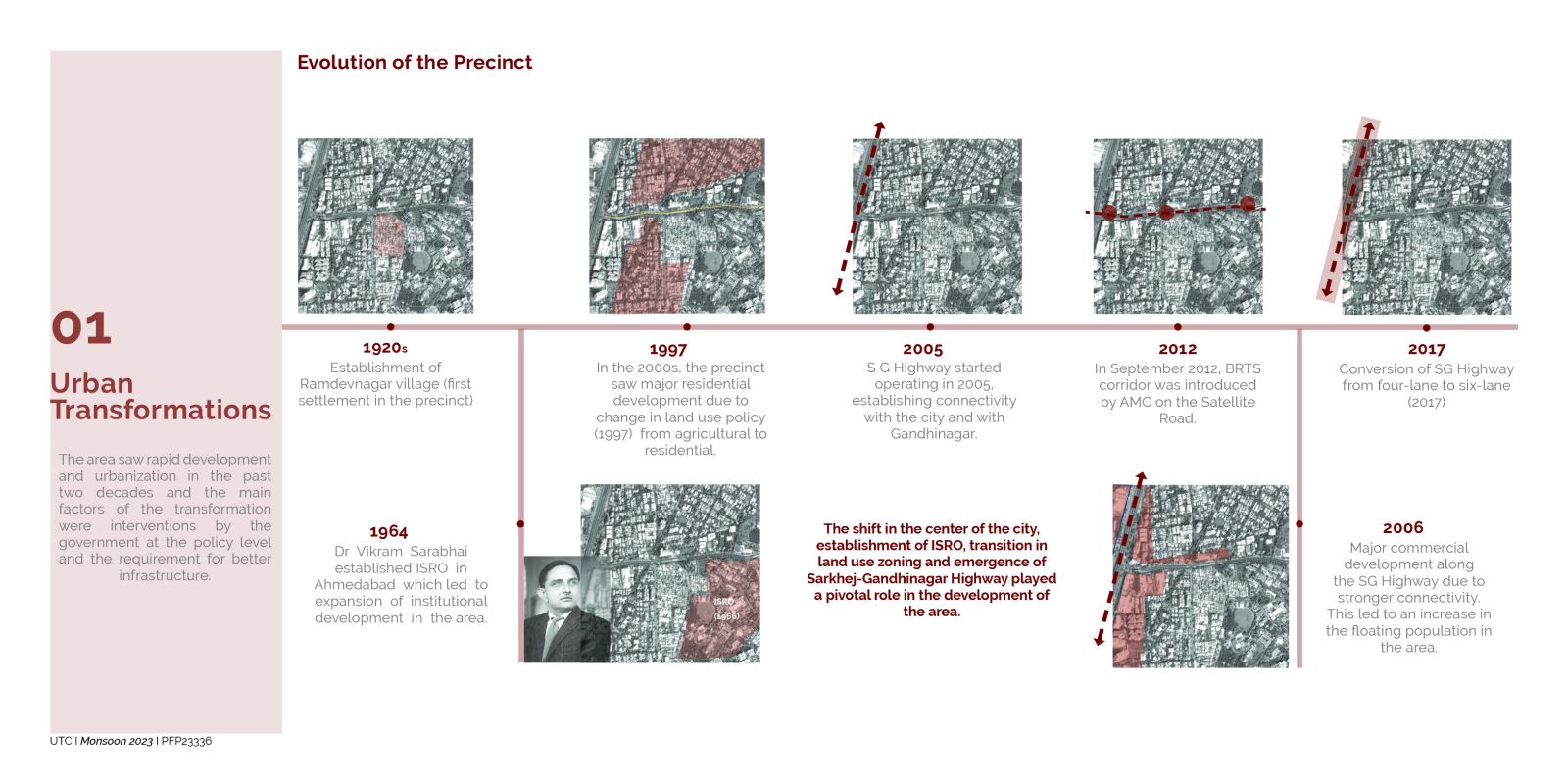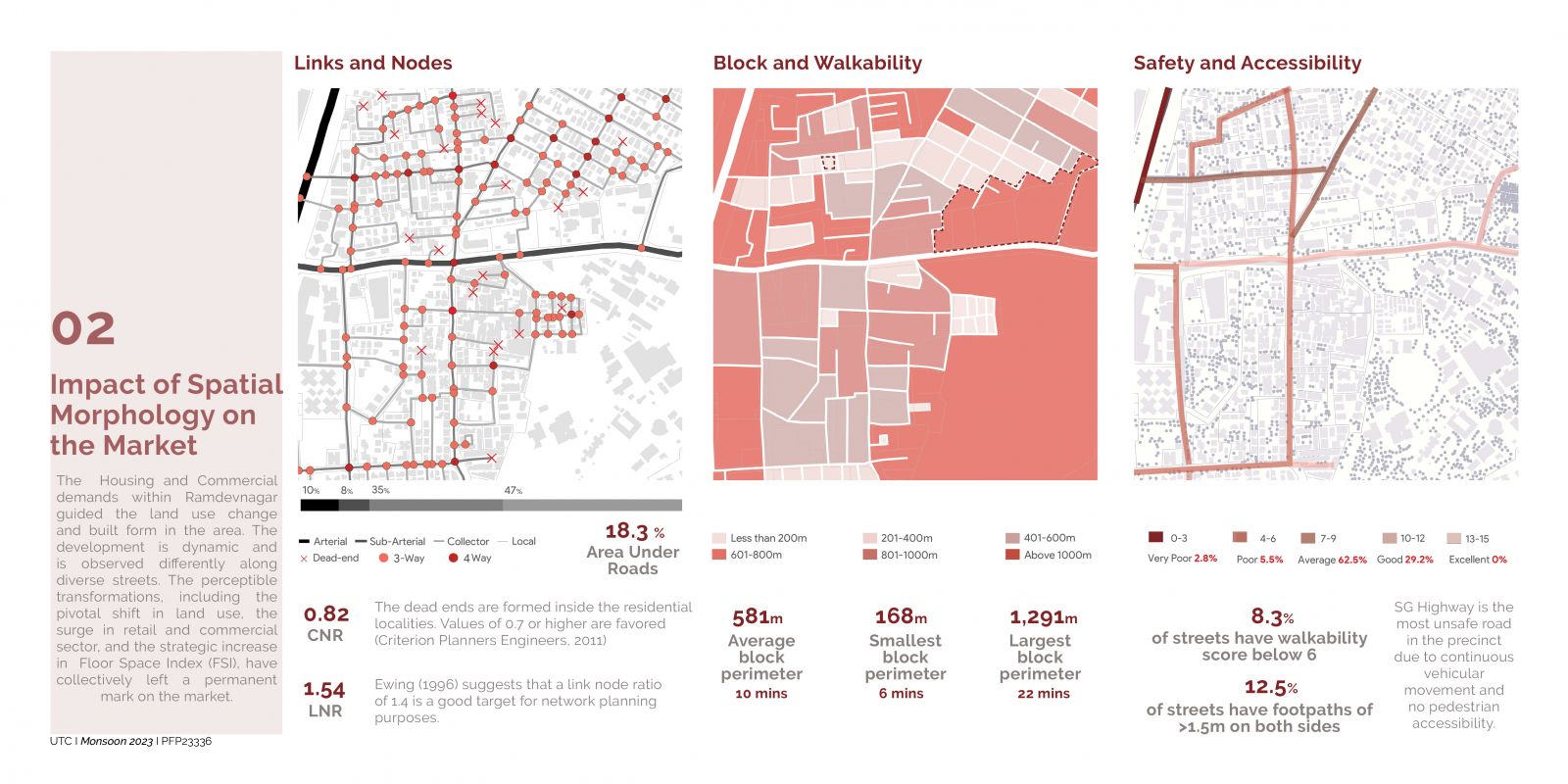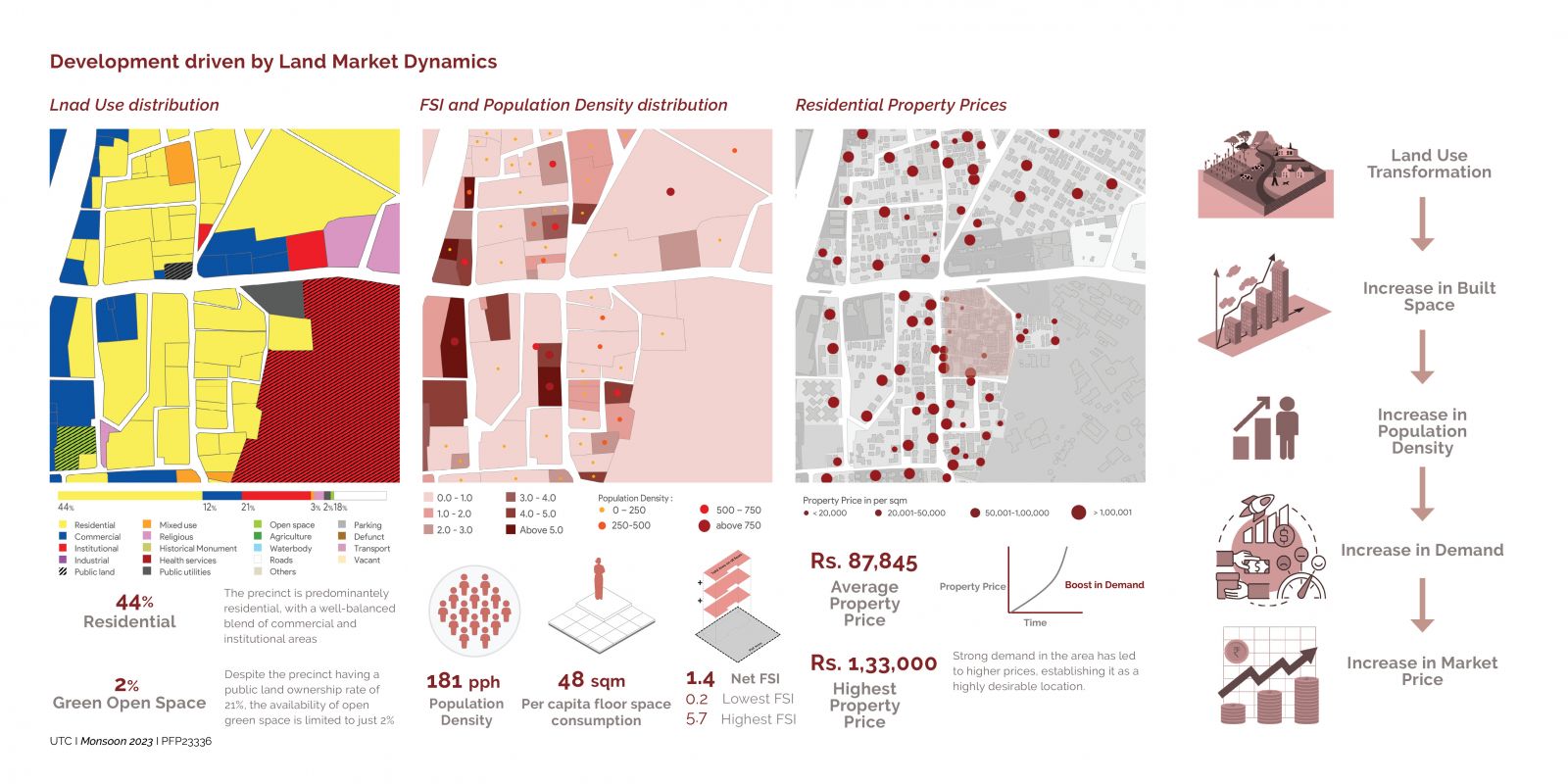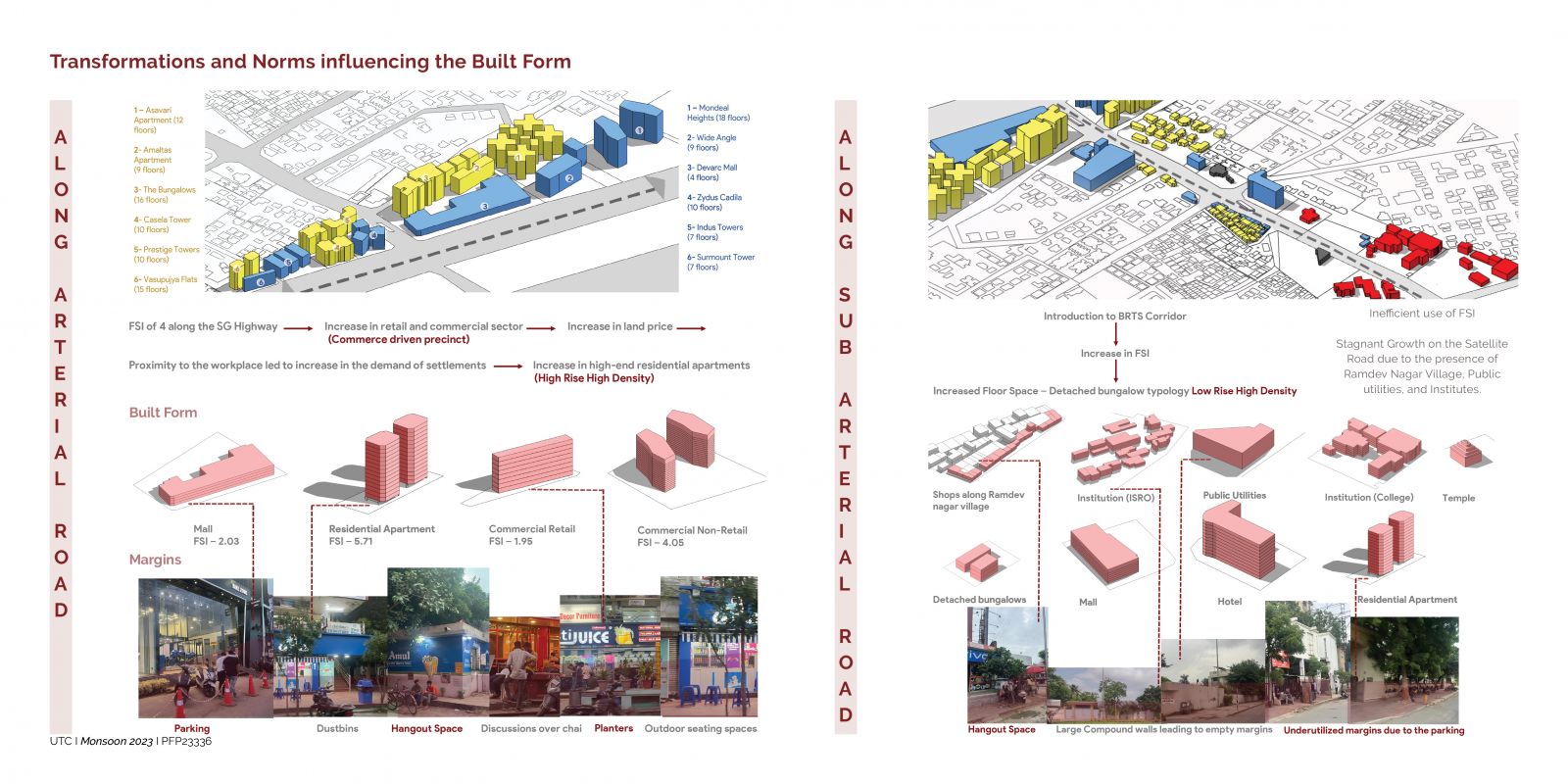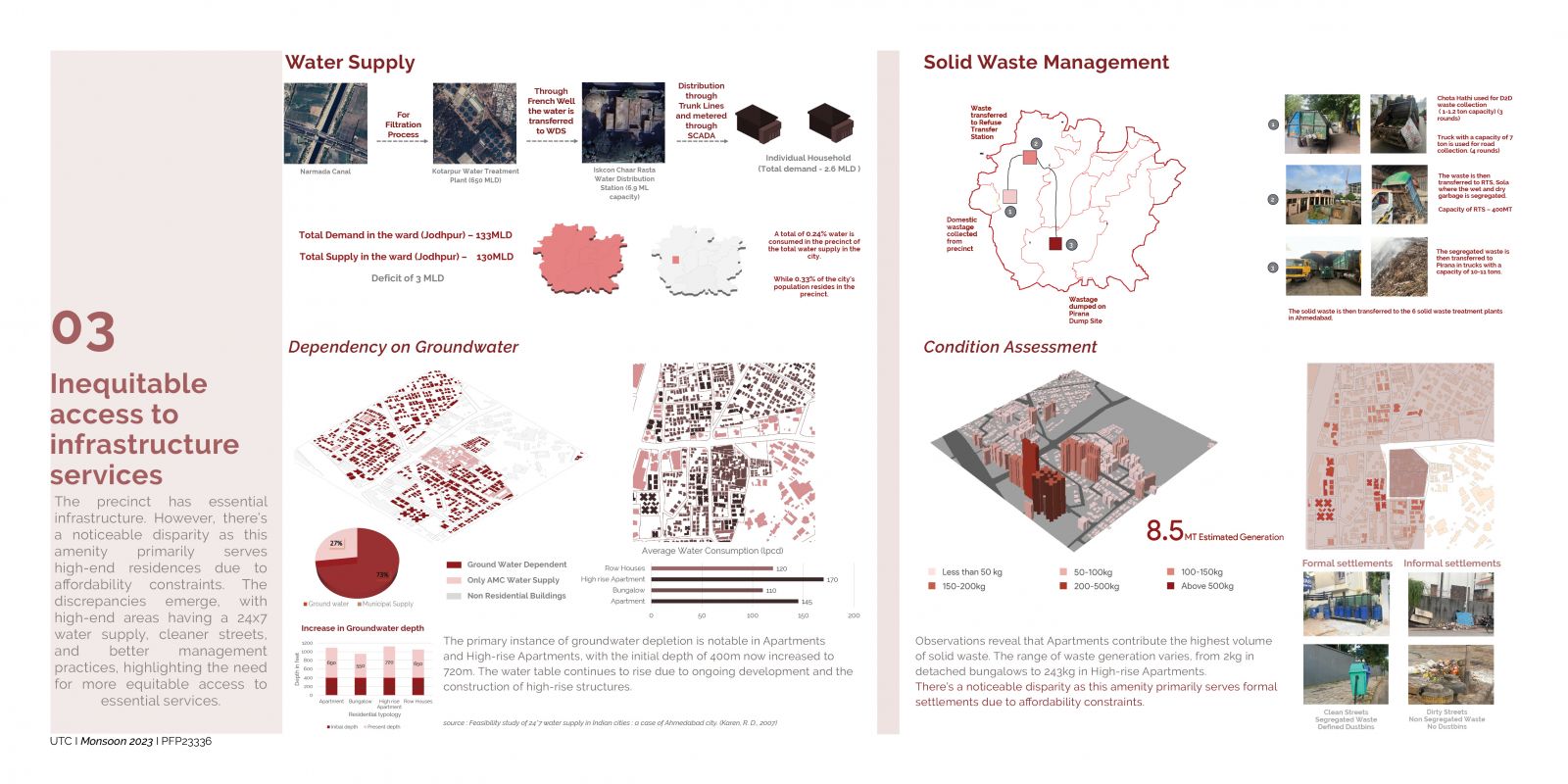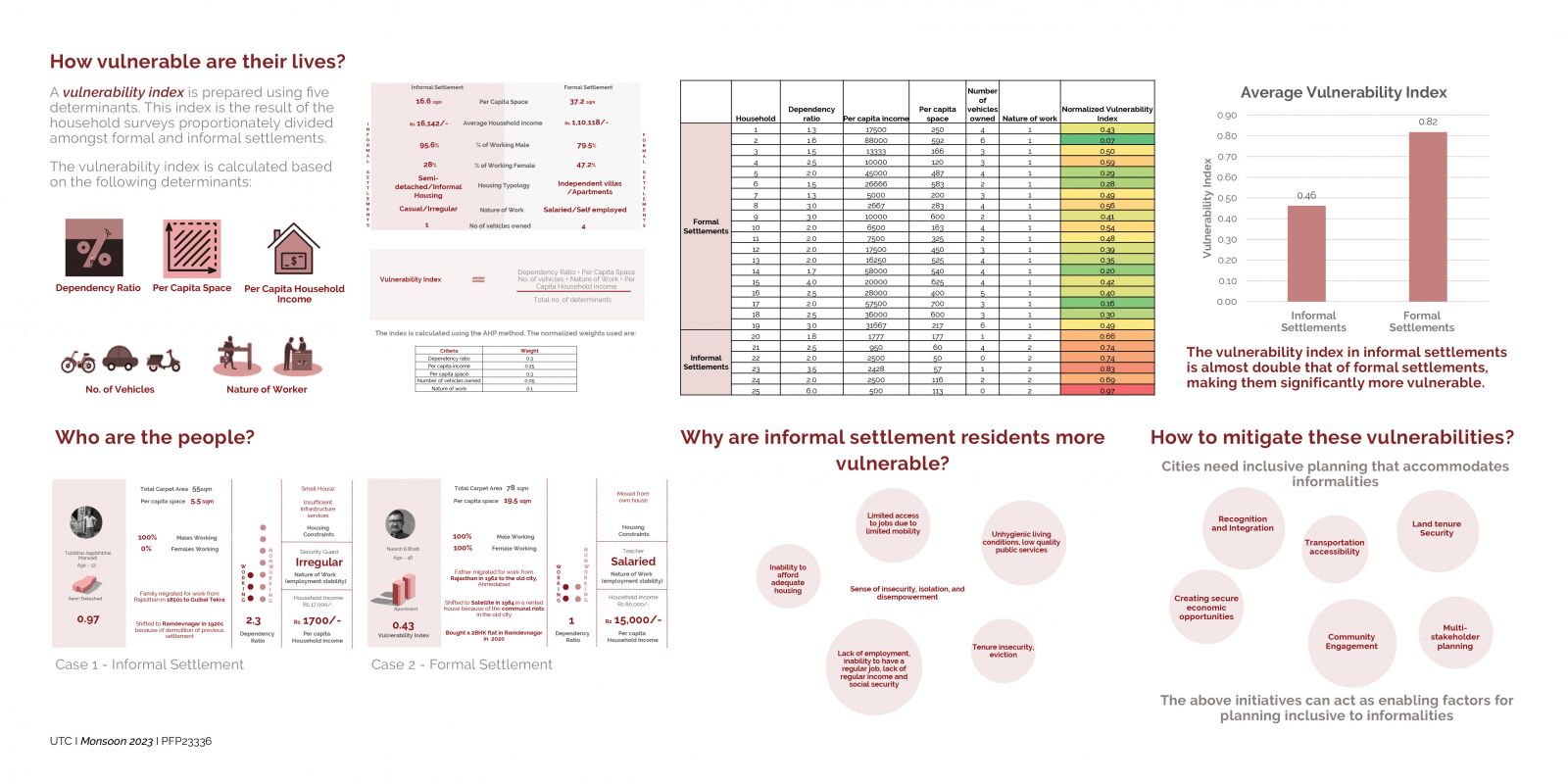Your browser is out-of-date!
For a richer surfing experience on our website, please update your browser. Update my browser now!
For a richer surfing experience on our website, please update your browser. Update my browser now!
Ahmedabad is one of the fastest-growing cities in India and this study delves into the dynamic development of a specific area within the city i.e., Iskcon cross road. Situated in the city's western region, alongside the Sarkhej Gandhinagar Highway, it has witnessed a remarkable transformation over the past two decades, evolving into a vibrant commercial, residential, and institutional hub. This study focuses on a comprehensive analysis of a one-square-kilometer expanse in the precinct. It aims to offer an in-depth overview of key facets of the precinct: initial observations, evolution, street network, land utilization and built form, infrastructure, jobs, transportation and housing. Its primary focus is on deciphering the spatial development and its street network and aims at determining the factors that reflect the rapid urbanization and its impact on the property prices in the study area.
